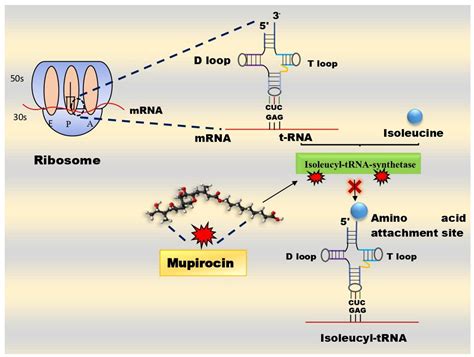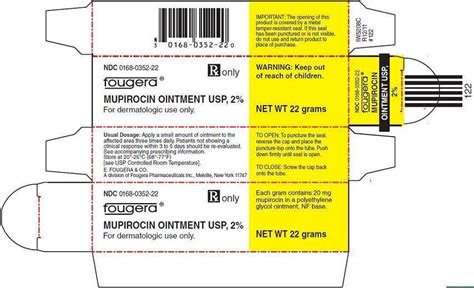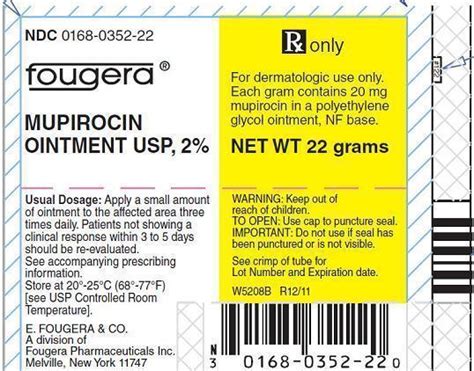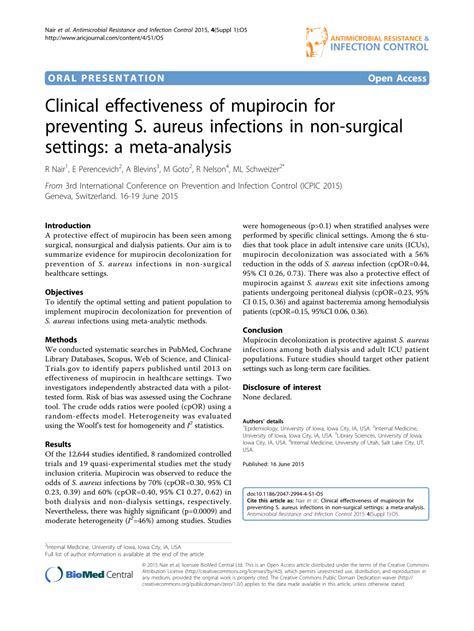Intro
Mupirocin is a topical antibiotic treating bacterial skin infections, impetigo, and MRSA, with antimicrobial properties inhibiting protein synthesis.
Mupirocin is an antibiotic that has been widely used for several decades to treat various bacterial infections. The importance of antibiotics like mupirocin cannot be overstated, as they have revolutionized the treatment of bacterial diseases and saved countless lives. However, the rise of antibiotic resistance has made it essential to understand how antibiotics like mupirocin work and how they should be used responsibly. In this article, we will delve into the world of mupirocin, exploring its mechanism of action, benefits, and potential drawbacks.
The discovery of antibiotics has been one of the most significant medical advancements in human history. Before the advent of antibiotics, bacterial infections were often fatal, and the treatment options were limited. With the development of antibiotics like mupirocin, doctors and healthcare professionals can now effectively treat a wide range of bacterial infections, from minor skin infections to life-threatening diseases like pneumonia and sepsis. Mupirocin, in particular, has been shown to be highly effective against certain types of bacteria, including methicillin-resistant Staphylococcus aureus (MRSA), which is a major concern in hospitals and healthcare settings.
The use of antibiotics like mupirocin has also had a significant impact on public health. By reducing the burden of bacterial infections, antibiotics have helped to increase life expectancy, reduce morbidity, and improve quality of life. Moreover, the development of antibiotics has also driven advances in other areas of medicine, such as surgery and cancer treatment, where the risk of infection is a major concern. As we continue to face the challenges of antibiotic resistance, it is essential to understand the importance of responsible antibiotic use and the role that antibiotics like mupirocin play in modern medicine.
Mupirocin Mechanism of Action

The benefits of mupirocin's mechanism of action are several. Firstly, it is highly effective against a wide range of bacteria, including MRSA, which is a major concern in hospitals and healthcare settings. Secondly, mupirocin is relatively safe and well-tolerated, with minimal side effects and low risk of toxicity. Finally, mupirocin's unique mechanism of action makes it less likely to contribute to antibiotic resistance, which is a major concern with other antibiotics.
Mupirocin Benefits

In addition to these benefits, mupirocin has also been shown to be highly effective in preventing bacterial infections in certain high-risk populations, such as patients undergoing surgery or those with compromised immune systems. By reducing the risk of infection, mupirocin can help to improve outcomes and reduce the burden of disease in these populations.
Mupirocin Uses

Mupirocin can also be used to prevent bacterial infections in certain high-risk populations, such as patients undergoing surgery or those with compromised immune systems. By applying mupirocin to the skin or mucous membranes, healthcare professionals can help to reduce the risk of infection and improve outcomes in these populations.
Mupirocin Side Effects

In rare cases, mupirocin can also cause more serious side effects, such as:
- Anaphylaxis, a severe allergic reaction that can cause difficulty breathing, rapid heartbeat, and a drop in blood pressure
- Angioedema, a type of severe swelling that can cause difficulty breathing and swallowing
- Stevens-Johnson syndrome, a rare but serious skin and mucous membrane disorder that can cause blisters, rash, and skin shedding
Mupirocin Resistance

To minimize the risk of resistance, it is essential to use mupirocin responsibly and only when necessary. This includes:
- Using mupirocin for the shortest duration necessary to treat the infection
- Avoiding unnecessary use of mupirocin, such as for viral infections or non-bacterial conditions
- Monitoring for signs of resistance, such as treatment failure or worsening symptoms
- Reporting any suspected cases of resistance to healthcare professionals or public health authorities
Mupirocin Interactions

It is essential to inform healthcare professionals about any medications or supplements being taken before using mupirocin. This can help to minimize the risk of interactions and ensure safe and effective treatment.
Mupirocin and Pregnancy
Mupirocin is generally considered safe to use during pregnancy, but it is essential to consult with healthcare professionals before using any medication during this time. Mupirocin has been shown to cross the placenta, but the risk of harm to the fetus is considered low.Mupirocin and Breastfeeding
Mupirocin is generally considered safe to use during breastfeeding, but it is essential to consult with healthcare professionals before using any medication during this time. Mupirocin has been shown to be excreted in breast milk, but the risk of harm to the infant is considered low.What is mupirocin used for?
+Mupirocin is used to treat a wide range of bacterial infections, including impetigo, folliculitis, furuncles, and carbuncles. It can also be used to prevent bacterial infections in certain high-risk populations, such as patients undergoing surgery or those with compromised immune systems.
How does mupirocin work?
+Mupirocin works by inhibiting bacterial protein synthesis. It does this by binding to the bacterial enzyme isoleucyl-tRNA synthetase, which is essential for the production of proteins. By inhibiting this enzyme, mupirocin prevents the bacteria from producing the proteins they need to survive and multiply.
What are the potential side effects of mupirocin?
+The potential side effects of mupirocin include redness, itching, or burning at the site of application, rash or hives, pruritus, and contact dermatitis. In rare cases, mupirocin can also cause more serious side effects, such as anaphylaxis, angioedema, and Stevens-Johnson syndrome.
In conclusion, mupirocin is a highly effective antibiotic that has been widely used to treat various bacterial infections. Its unique mechanism of action, low risk of side effects, and high efficacy make it an essential tool in the fight against bacterial diseases. However, it is essential to use mupirocin responsibly and only when necessary to minimize the risk of resistance and ensure safe and effective treatment. We hope this article has provided you with a comprehensive understanding of mupirocin and its uses. If you have any further questions or would like to share your experiences with mupirocin, please don't hesitate to comment below.
